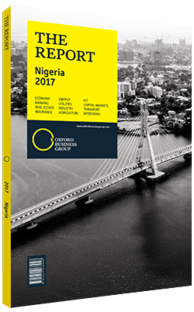Hadiza Bala Usman, Managing Director, Nigerian Ports Authority: Interview

Interview: Hadiza Bala Usman
What are the top priorities in terms of improving the capacity of Nigeria’s port infrastructure?
HADIZA BALA USMAN: We need to improve our operational efficiency to ensure our infrastructure is able to meet the needs of investors coming to the country. We have noticed areas of channel management that require development, and we have channel designs in the Lagos Pilotage District that we are looking to expand. We are also considering channel depths and innovations for our infrastructure to enable large vessels to enter. We are concerned by the amount of resources the government has deployed in the dredging of our channels; consequently, we are planning to implement a more data-based approach towards expenditure on channel management and dredging. We advertised this consultancy work in an international tender, we evaluated the bids that came in, and now we believe the resulting designs will successfully guide the execution of our annual dredging plan.
What reforms will reduce turnaround time?
USMAN: We are working on establishing an effective community system for the port: an IT platform that would link up with the National Single Window. This would be a trade platform whereby all entities that operate within trade facilitation and the transit of goods could make payments within the platform, and it would include the Nigeria Customs Service, the Standards Organisation of Nigeria, among other relevant parties. This would greatly improve the efficiency of operations, by reducing the physical presence of additional agencies at the port.
How can private sector participation be increased in the maritime and shipping industry?
USMAN: Our role is regulatory, though there are still some aspects of operation that we retain, and we are keen to see how these would be done through a public-private partnership (PPP). For example, we are evaluating our dockyard operations and may opt to have a PPP run and invest in this sphere.
How are new measures reducing gridlock?
USMAN: We have gridlock in the Apapa area and we need an intramodal transportation system to properly address this, as 80-90% of the cargoes leaving our ports currently use route transportation. This must be changed. The minister of transportation is in the midst of leading a concessioning process with General Electric for the rail line, to gather the initial investment and infrastructure deployment for the rail to the ports. So far they have committed to deploy infrastructure, and maintain and refurbish the rail lines to the Apapa port, and have agreed to invest in taking the rail to the Tin Can island port. Without this intermodal transportation, we will not be able to overcome the gridlock in and around our port areas. We are working with the minister of transportation to explore the utilisation of inland waterways to evacuate cargoes from our ports and have discussed a five year plan, in which cargoes are more evenly distributed across existing transportation routes.
In what ways is Nigeria working to increase its share of transit and trans-shipment activity?
USMAN: We have deep seaports that we are currently working on, whereby the Nigerian Ports Authority is a minority shareholder in certain instances, such as the Lekki deep seaport and the recently approved Badagry deep seaport project. We believe that when these ports come on-line we will be able to address the additional expansion in Tema and Abidjan. Indeed, we need to improve our tariff regime and our pricing in order to become more competitive in the market. We believe that with new ports and improved operational efficiency, combined with the reduction in human intervention, we will be considered one of the best options for bringing cargoes to the West African coast.
You have reached the limit of premium articles you can view for free.
Choose from the options below to purchase print or digital editions of our Reports. You can also purchase a website subscription giving you unlimited access to all of our Reports online for 12 months.
If you have already purchased this Report or have a website subscription, please login to continue.

